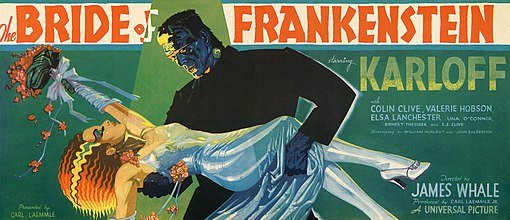1935: “Bride of Frankenstein” Release
In the history of cinema, there are certain films that stand the test of time and become legendary. One such film is “Bride of Frankenstein,” the sequel to the 1931 classic “Frankenstein.” Released on April 19, 1935, this film has left an indelible mark on the horror genre and continues to captivate audiences even today.
Directed by James Whale, “Bride of Frankenstein” stars the iconic Boris Karloff as the monster and introduces Elsa Lancaster in the dual role of his bride and Mary Shelley. The film is widely regarded as a masterpiece, not only for its compelling narrative but also for its atmospheric cinematography and critically acclaimed performances.
A Masterpiece of the Horror Genre
When “Bride of Frankenstein” was released, it garnered both critical acclaim and commercial success. Audiences were captivated by the film’s ability to expand on the themes of its predecessor and infuse them with dark humor and poignant commentary on humanity and creation.
One of the reasons why “Bride of Frankenstein” is considered a masterpiece is its sophisticated narrative. The film delves deeper into the psyche of the monster and explores his yearning for companionship. It raises thought-provoking questions about the nature of humanity and the consequences of playing God.
Another aspect that sets “Bride of Frankenstein” apart is its atmospheric cinematography. James Whale masterfully uses lighting and shadows to create a sense of foreboding and suspense. The gothic sets and haunting visuals contribute to the overall eerie atmosphere of the film.
Of course, the performances in “Bride of Frankenstein” are also worth mentioning. Boris Karloff once again delivers a mesmerizing portrayal of the monster, capturing both his vulnerability and his terrifying presence. Elsa Lancaster’s dual role as the bride and Mary Shelley showcases her versatility as an actress.
The Legacy of “Bride of Frankenstein”
Over the years, “Bride of Frankenstein” has continued to leave a lasting impact on the horror genre and popular culture as a whole. It has inspired countless filmmakers and artists, and its influence can be seen in subsequent horror films.
One of the reasons why “Bride of Frankenstein” remains relevant is its exploration of timeless themes. The film delves into the human desire for connection and the consequences of tampering with nature. These themes resonate with audiences even today, making the film’s message enduring.
Additionally, “Bride of Frankenstein” is often praised for its technical achievements. The special effects used to bring the monster and his bride to life were groundbreaking for their time. The iconic design of the bride, with her electrified hair and bandages, has become an iconic image in horror cinema.
For those interested in exploring the historical context and impact of “Bride of Frankenstein,” there are several external references available. These references provide in-depth information about the making of the film, its reception, and its lasting legacy.
In conclusion, the release of “Bride of Frankenstein” in 1935 marked a significant moment in the history of cinema. This sequel to the classic “Frankenstein” not only expanded on its predecessor’s themes but also added its own unique elements, making it a masterpiece of the horror genre. With its sophisticated narrative, atmospheric cinematography, and critically acclaimed performances, “Bride of Frankenstein” continues to captivate audiences and inspire filmmakers to this day.

